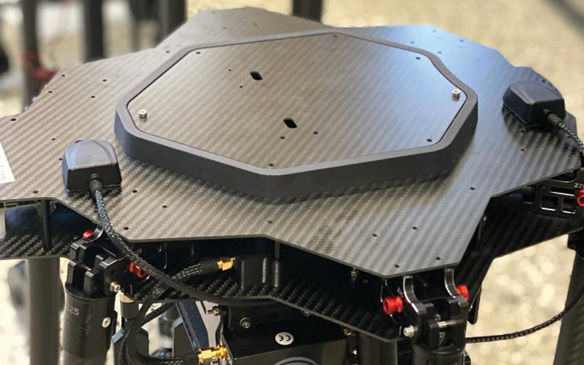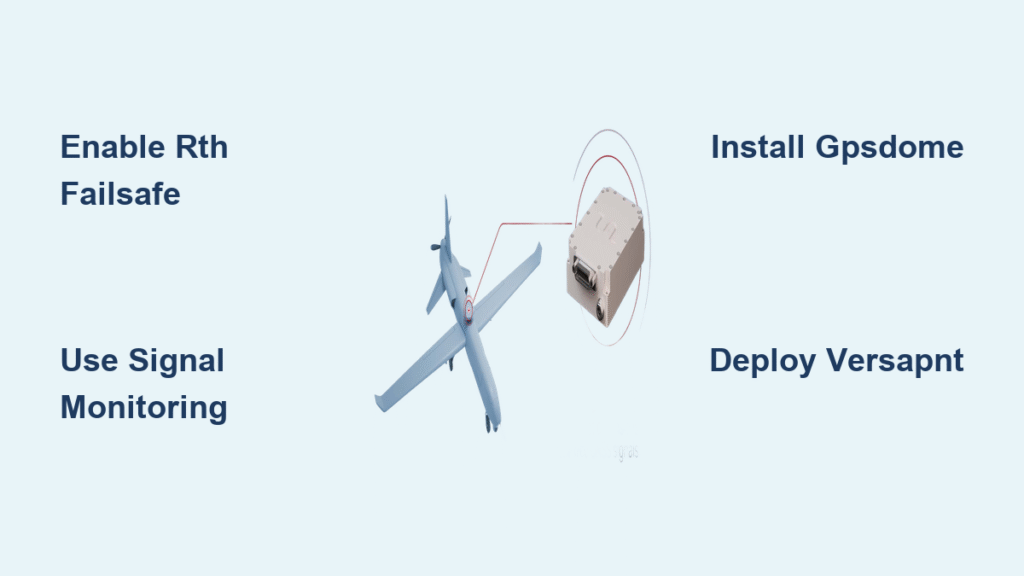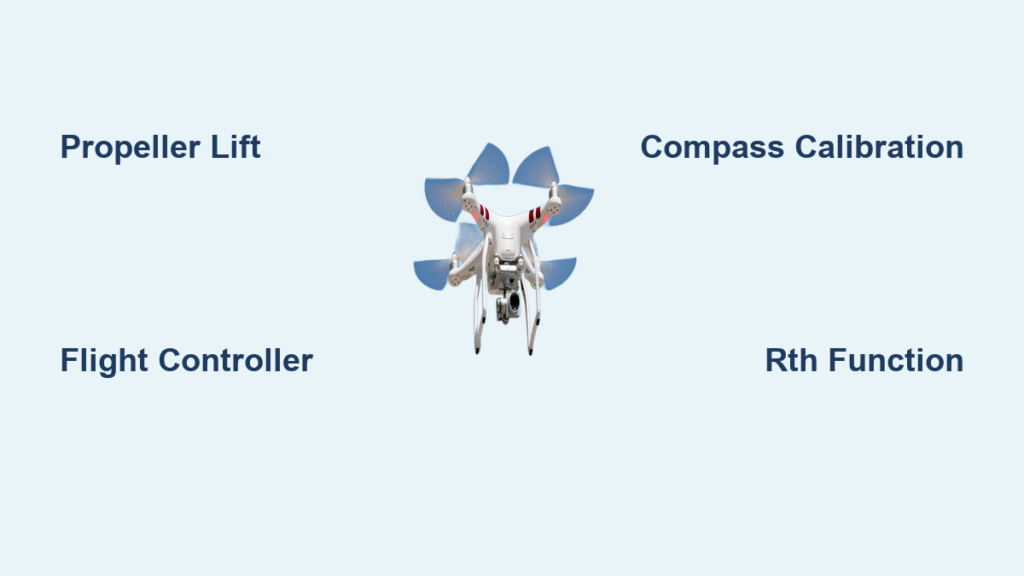Your drone suddenly loses GPS lock and drifts off course. The video feed stutters, then cuts out completely. Moments later, control inputs stop responding. This scenario plays out thousands of times annually as jammers target civilian and commercial drones across communication frequencies and GPS systems. Knowing how to protect drone from jamming isn’t just about saving expensive equipment—it’s about maintaining operational capability when interference threatens your mission. By implementing these proven countermeasures, you can significantly reduce vulnerability to signal disruption and maintain control when it matters most.
Why Your Drone Suddenly Loses Control: Real Jamming Scenarios You Must Prepare For

Most drone attacks focus on specific radio bands that control your aircraft. 2.4 GHz serves as the primary control frequency for consumer drones, while 5.8 GHz carries video feeds and secondary controls. GPS signals at 1.57542 GHz remain particularly vulnerable since civilian GPS lacks encryption. Russian military operations in Ukraine have dramatically increased GNSS jamming across eastern Mediterranean, Baltic Sea, and Arctic regions, making these threats more widespread than ever before.
How Jamming Devices Overwhelm Your Drone’s Signals
Radio frequency jamming floods target frequencies with noise or false signals, overwhelming legitimate commands from your controller. Legitimate GPS signals operate at approximately -130 dBm, while jamming devices can emit signals thousands of times stronger. Software-defined radios enable sophisticated attacks at minimal cost, with basic jamming devices available for just a couple hundred dollars. When these devices activate, your drone may experience sudden navigation errors, uncommanded movements, or complete loss of control.
GPS Spoofing vs. Jamming: Critical Differences You Must Recognize
GPS spoofing creates counterfeit location data by transmitting stronger false satellite signals, causing your drone to believe it’s in a different location. Unlike simple jamming that merely blocks signals, spoofing actively manipulates your drone’s navigation system. Civilian GPS signals lack encryption, making them particularly vulnerable to this sophisticated attack. If your drone suddenly begins flying toward an unexpected location without input from your controller, spoofing—rather than simple jamming—may be occurring.
Targeted Communication Frequencies Hackers Exploit (And How to Block Them)
Drones rely on specific radio bands that attackers deliberately target. Understanding which frequencies are vulnerable helps you implement proper countermeasures. 2.4 GHz remains the primary attack vector for consumer drones, while professional systems using 900 MHz or 433 MHz face different interference patterns. Military conflict zones and US-Mexico border areas report the highest concentration of jamming activity, but incidents are increasing near airports and government facilities worldwide.
2.4 GHz and 5.8 GHz Vulnerability Fixes
Most consumer drones use 2.4 GHz for control and 5.8 GHz for video transmission. To protect against jamming on these bands:
- Enable dual-band operation if your drone supports it (like DJI’s OcuSync technology)
- Activate frequency hopping which automatically switches channels when interference is detected
- Install low-pass filters to prevent harmonic interference from onboard electronics
- Reduce video transmission resolution temporarily during suspected jamming to maintain control signals
Alternative Frequency Strategies for Critical Missions
Consider operating on less targeted frequencies when regulatory compliance allows. 900 MHz systems like DragonLink offer extended range with reduced interference, while 433 MHz control systems with proper low-pass filtering provide alternative channels. Be aware that regional licensing requirements vary, and some non-standard frequencies require specific permits. Before deploying alternative frequencies, verify local regulations and conduct thorough testing in controlled environments.
GPSdome Anti-Jammer: Install This Palm-Sized Protector on Any Drone Today

The GPSdome from Orolia offers plug-and-play protection smaller than your palm. This compact device connects directly to existing UAV antennas, actively detecting jamming signals and redirecting them away using a secondary antenna. Weighing under 150 grams, it requires zero custom engineering while providing immediate interference protection. Installation takes under 15 minutes with basic tools—simply connect it between your drone’s existing GPS antenna and receiver.
How GPSdome Creates an Electromagnetic Shield
GPSdome works by creating an electromagnetic field that deflects jamming signals away from your drone’s receiver. When interference is detected, the device automatically activates its secondary antenna to redirect harmful signals. Unlike traditional jamming prevention methods that require complex integration, GPSdome functions as a standalone protector that works with virtually any drone platform. Field tests show it maintains positioning accuracy even when exposed to jamming signals 1,000 times stronger than legitimate GPS broadcasts.
VersaPNT Navigation System: Maintain Flight During Complete GPS Blackouts
For complete navigation resilience during jamming attacks, VersaPNT combines high-precision inertial sensors with stable internal time references. This MIL-STD-810G compliant system maintains navigation during complete GNSS outages, featuring IP67 protection and low SWAP characteristics ideal for UAV platforms. When GPS fails, VersaPNT keeps your drone operational using internal references, preventing the uncontrolled drifting that typically follows jamming incidents.
Bavovna Hybrid INS: AI Navigation for GPS-Denied Environments
The Bavovna hybrid INS leverages AI sensor fusion to achieve 98% accuracy in GPS-denied environments. Processing accelerometer, gyroscope, and compass data alongside computer vision and LiDAR inputs, this EMI-protected system provides reliable navigation when external signals fail. Unlike basic inertial navigation systems that drift over time, Bavovna’s AI continuously corrects positioning errors using multiple sensor inputs, maintaining accuracy even during extended jamming events.
Pre-Flight Anti-Jamming Checklist: 7 Critical Steps Before Every Mission
Environmental Risk Assessment Protocol
Before launching, check restricted airspace using FAA B4UFLY or equivalent national services. Avoid military zones, government buildings, and critical infrastructure where jamming activity concentrates. Monitor known interference areas through aviation authority partnerships and threat intelligence services. Create no-fly zone maps for high-risk areas and update them regularly based on regional interference pattern analysis.
Equipment Configuration Checklist
- Enable return-to-home (RTH) functions with GPS-independent backup modes
- Configure failsafe protocols for signal loss scenarios (immediate landing vs. holding position)
- Test emergency procedures in controlled environments before actual deployment
- Install signal monitoring apps displaying real-time RSSI values
- Verify alternative frequency compliance with local regulations
- Carry external GPS modules for redundant positioning verification
- Identify emergency landing sites within gliding distance of your flight path
In-Flight Jamming Response Protocol: What to Do When Signals Start Failing
Immediate Action Steps During Signal Degradation
When you notice sudden RSSI drops or erratic drone behavior indicating jamming:
- Reduce altitude to improve line-of-sight with your controller
- Switch to manual flight mode if available to bypass automated systems
- Execute emergency landing procedures immediately at pre-identified safe sites
- Deploy backup communication systems on alternative frequencies if available
- Maintain visual line-of-sight to manually guide the drone to safety
Visual Cues That Indicate Active Jamming
Watch for these specific indicators that signal jamming rather than simple signal loss:
– Sudden, unexplained course changes without controller input
– GPS satellite count dropping rapidly from normal levels
– Inconsistent altitude readings despite stable barometer data
– Control lag increasing while video feed remains clear (indicating targeted control frequency jamming)
Why Jamming Devices Are Illegal (And What You Should Report Instead)
Jamming devices remain illegal in most countries, including the US, UK, and EU. Never attempt counter-jamming operations, as this violates federal communications regulations and could cause interference with critical infrastructure. Instead, immediately report suspected jamming activities to appropriate aviation authorities with as much detail as possible about location, time, and observed effects.
Three-Layer Defense Strategy: Military-Grade Protection for Civilian Drones
Implement This Complete Protection Framework
- Prevention Layer: Install GPSdome Anti-Jammer to block signals from reaching your receiver
- Detection Layer: Deploy BroadShield real-time monitoring for immediate threat alerts
- Mitigation Layer: Integrate VersaPNT navigation to maintain flight during complete outages
This layered approach provides comprehensive protection without requiring custom engineering. Field-proven over a decade of testing, this three-tiered strategy works across virtually all drone platforms and has successfully maintained operations during deliberate jamming attempts in high-risk environments.
Immediate Actions: 4 Anti-Jamming Steps to Take This Week (No New Hardware)
You don’t need expensive equipment to begin protecting your drone from jamming right now:
- Enable RTH and failsafe modes on all existing drones with GPS-independent backup
- Install signal monitoring apps on ground control devices to track RSSI in real-time
- Create no-fly zone maps avoiding military zones, government buildings, and critical infrastructure
- Test emergency landing procedures in controlled environments before actual missions
These basic steps form the foundation of drone jamming protection and can prevent most accidental losses during minor interference events. For commercial operators, these simple measures represent the minimum standard for responsible drone operation in today’s increasingly contested electromagnetic environment.
Your drone’s resilience against jamming depends on combining hardware protection, software monitoring, operational procedures, and regulatory compliance. Start with these immediate actions today, then systematically upgrade your protection layers as threats evolve and budget allows. As jamming technology becomes more accessible, proactive countermeasures transition from optional extras to essential components of responsible drone operation.



